Saint-Martin-de-Re
The island of Re had been subject to the
attentions of both of France's maritime rivals, England and
the Dutch, and had been attacked in 1627 by the English. In 1624,
a four sided fort had been built at Saint Martin, but this was
demolished in 1629. Re was important for Louis XIV to hold as it
helped
protect the Basque Roads and the new naval dockyard at Rochefort.
Foreign occupation of the island could help the enemy
supply his fleet with both food and water, so in 1681, Vauban was
sent to renovate the
island's fortifications. Fort de la Pree
was improved, and several small forts were built, but the
island's main defense would be the town of Saint-Martin. Here,
the city walls would be expansive enough to accommodate the island's
entire population, about 16,000 people, along with their livestock and
supplies. This was a forerunner of the later entrenched camp
concept. With facilities for 1,200 men, the
citadel would provide a final refuge for the defenders as well as
assert royal power over the citizens - important because the area had
seen
Protestant sympathies in recent decades. The works were
largely completed when Vauban revisited the site in 1685, but additional work
completed the project in 1702. An Allied fleet bombarded the
fortifications is 1696.
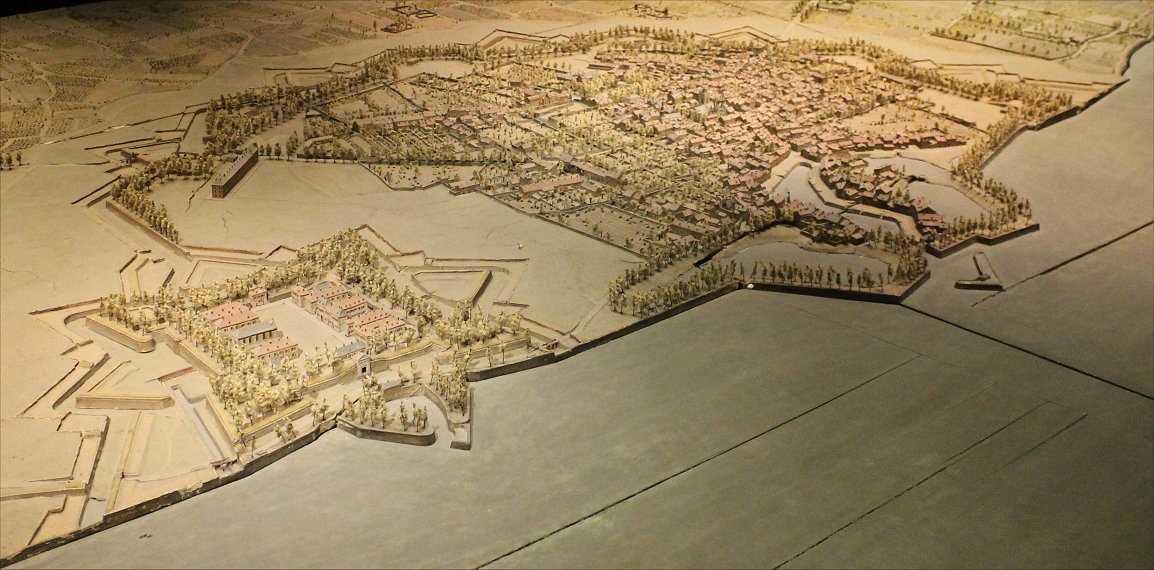
Model at Lille


Citadel's Eastern Side
The Dauphine Bastion adjacent to the sea is fronted by a half
counterguard of the same name. The France demi-lune fronts the
curtain.

We have passed around the Dauphine Bastion to the sea face.
Continuing on, we encounter a quay.

The citadel's boat basin was also fortified, serving as a sort of
demi-lune for the citadel's entrance gate, the Porte Royale. This
arrangement is now unique among the fortifications of France.
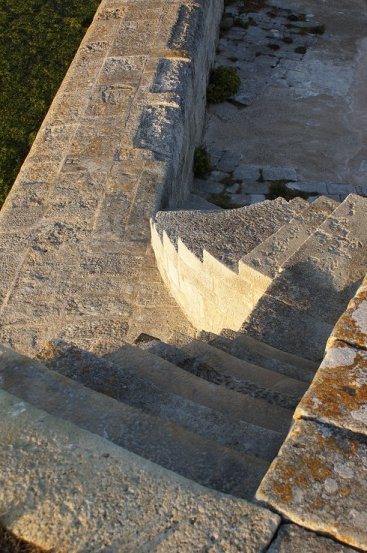
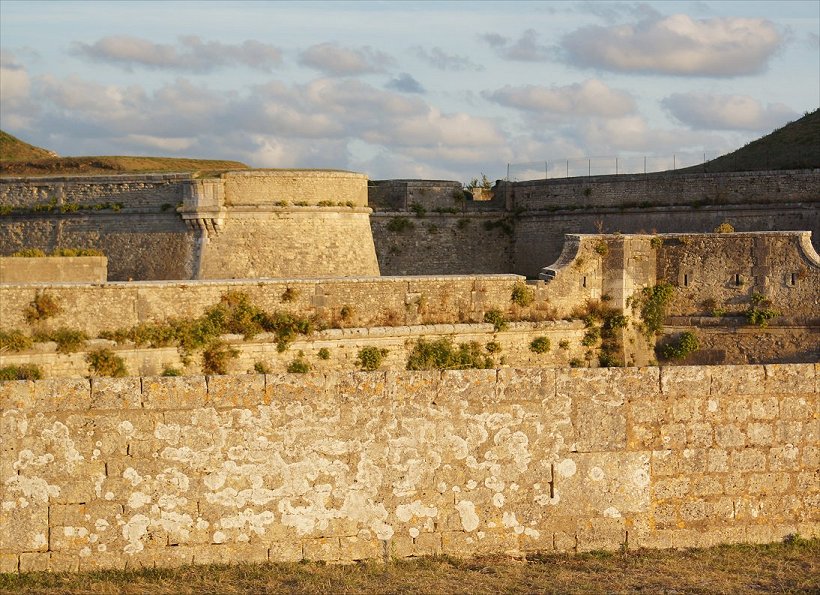

City Gate
This is the King's Bastion. The modern watchtower atop the
bastion is a modification helping make the citadel into a "Graybar
Hotel'. You can stay there for free, but it must be by court
order. Saint-Martin demi-lune is toward the center of the
panorams. Although the citadel fronts the sea, the ditch is dry.

City Walls - Southeastern Section
To facilitate modern traffic, the road now passes through the
Saint-Louis bastion. The historic entrance passes through
the La Flotte demi-lune and the Toiras gate. Several
bastions along the city walls feature cavaliers - fall back positions
in v=case the bastion walls are breached.

Powder Magazine
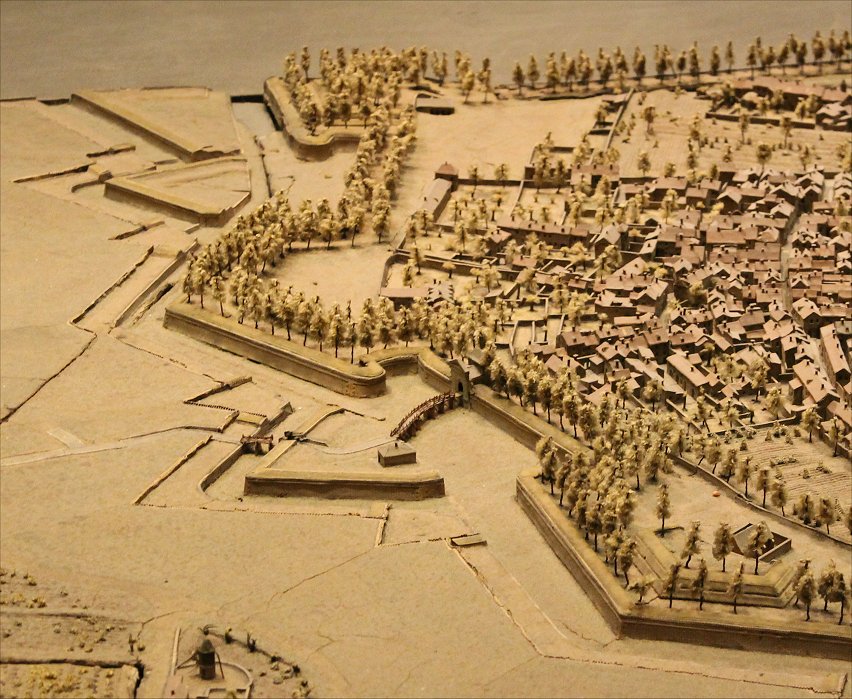
Porte des Campani
Here, we follow the western entrance through the city walls...


360 degree view just outside the La Couarde demi-lune, visible on each side of the panorama.

Porte des Campani
A cunette is an additional obstacle in the ditch, but it also drains the ditch.
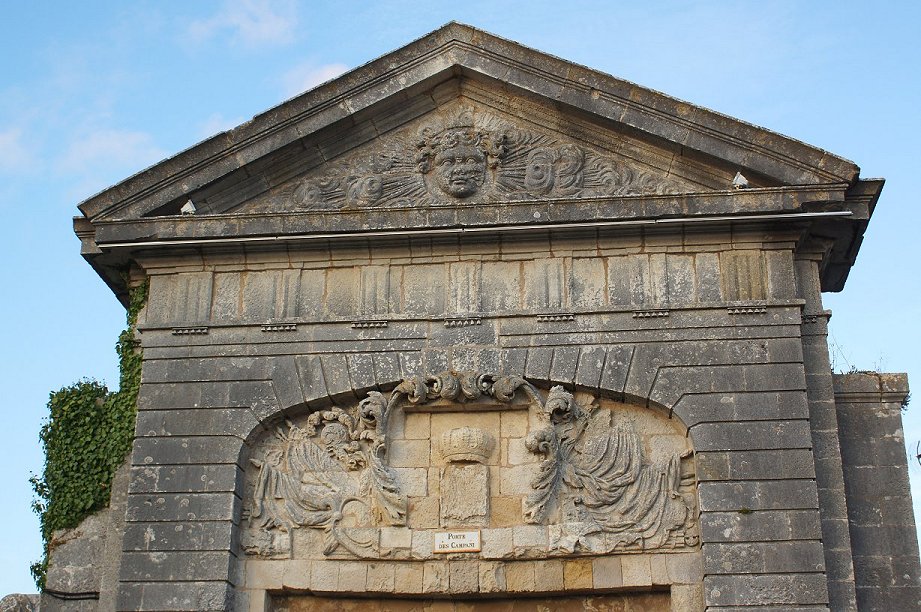
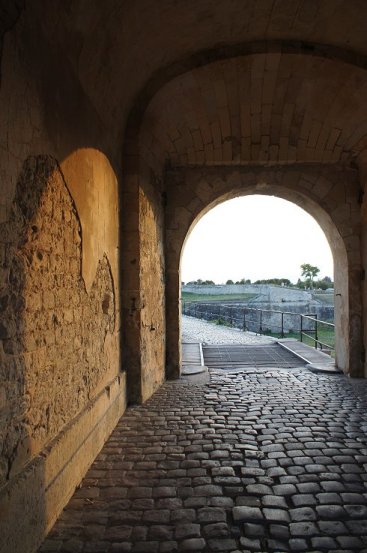
The Porte Campani included a drawbridge and a portcullis. Royal
images did not fare well during the Revolution. Here you
can see that an image has been chipped away beneath the crown.
Copyright 2015 by John Hamill















